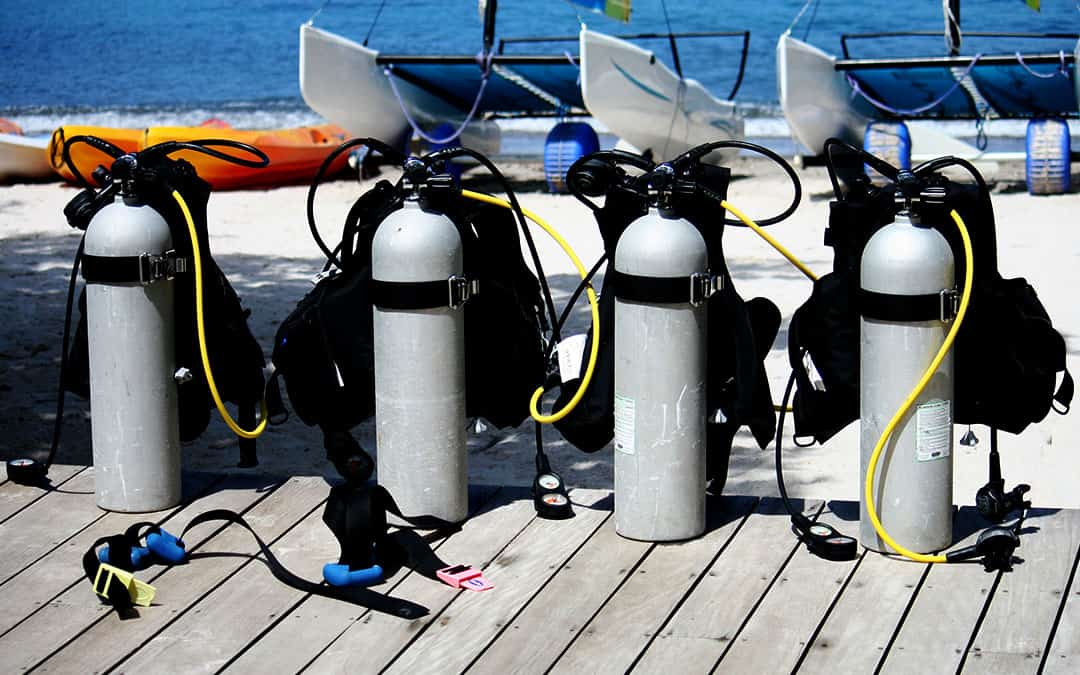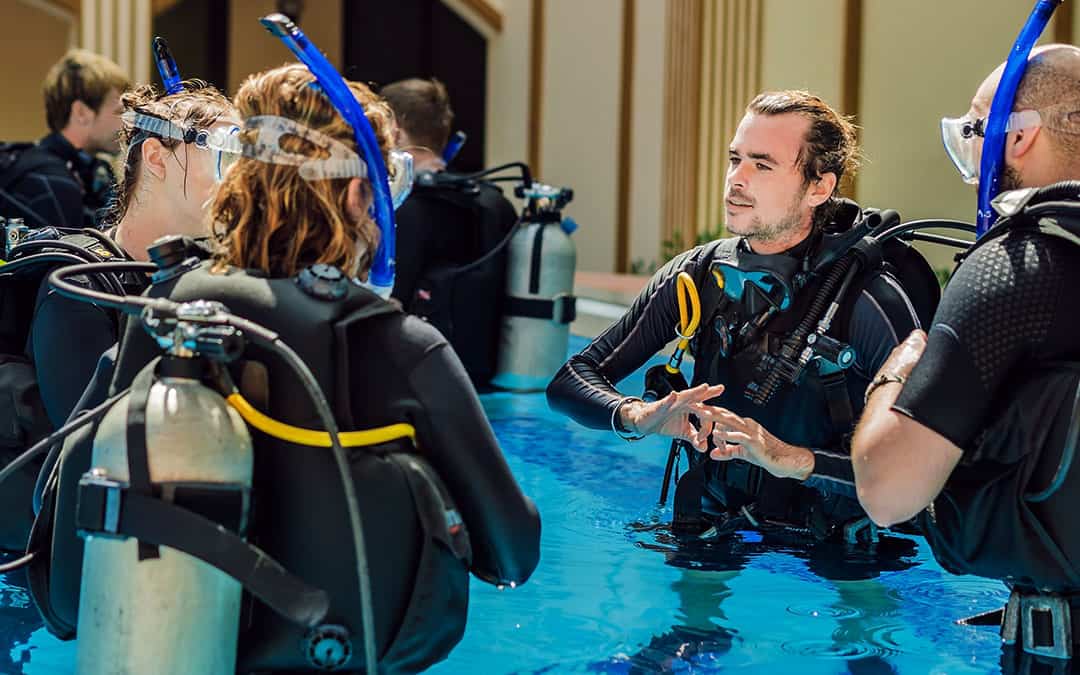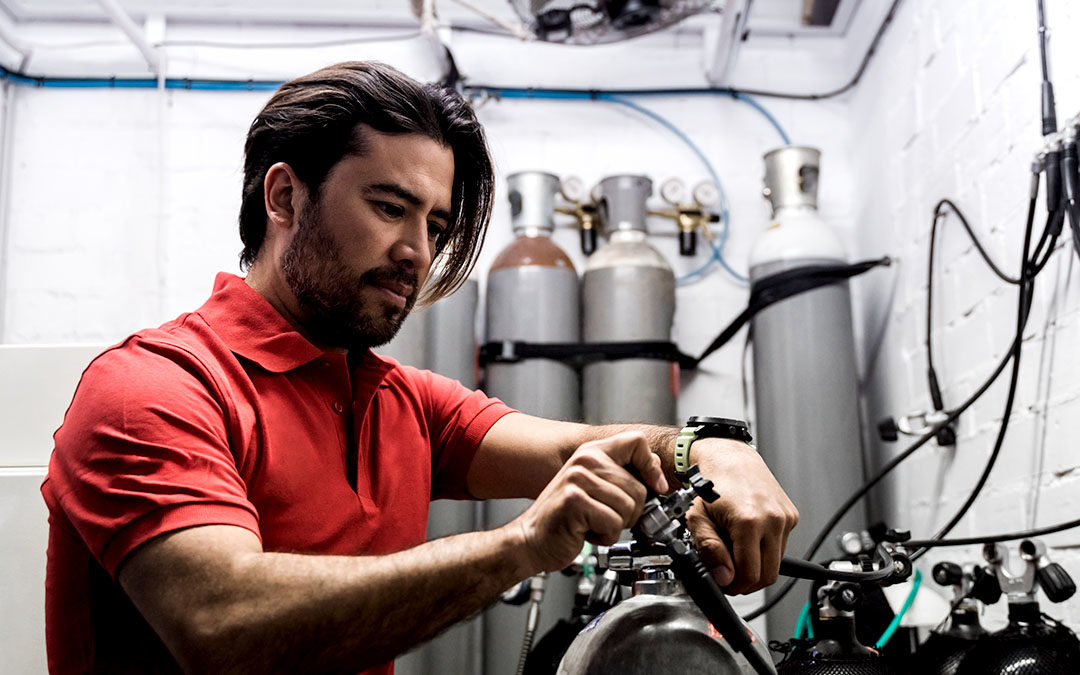One of the most incredible inventions in modern history, scuba diving allows aquatic enthusiasts to “breathe underwater” and explore previously unreachable depths. Scuba diving works by having divers wear a scuba oxygen tank with compressed air that is reduced to breathable air and transported to the mouth from a tube.
Regular Air vs. Pure Oxygen
Believe it or not, breathing in too much oxygen is entirely possible. Even though a few moments without oxygen will make it difficult for humans to survive, too much oxygen can damage the lungs, which is why divers do not use pure oxygen. The regular air we breathe is approximately 78% nitrogen and 21% oxygen, along with small portions of carbon dioxide, helium, neon, hydrogen, and other gasses. Scuba diving beyond 20 feet with pure oxygen can be hazardous and can lead to lung damage and the condition known as oxygen toxicity, which actually decreases the amount of oxygen transported into the blood.

Different Gas Mixtures
Gas mixtures in scuba diving tanks vary depending on the type of dive the scuba divers are planning on, and choosing the correct gas mixture is essential to the safety of a dive. For example, a mix of regular air is often in use for training. Other mixtures include hydrox, heliox, and nitrox. Hydrox is used in extreme deep diving. It is a mix of hydrogen and oxygen. It allows divers to explore incredibly deep depths and see things that would otherwise be unseen. However, hydrox can be unsafe and should only be used by experienced divers and professionals to monitor it.
Heliox and nitrox are used at depths not as deep as hydrox would allow. Nitrox is one of the most common gas blends and is made up of oxygen and nitrogen but with more oxygen than regular air. Before using nitrox, be sure to have the proper training and knowledge because nitrox can sometimes lead to oxygen toxicity when pushed to depths beyond its limits. Heliox, a mixture of helium and oxygen, is used for more profound depths of 200 feet and beyond. Since it is used in deeper depths, it has a lower oxygen portion to remove the chance of oxygen toxicity. Because of this, heliox requires a secondary scuba diving tank.
Safe Diving Practices

Before diving, ensure adequate training and knowledge to ensure your safety. Consult with your scuba diving guide. There are a variety of diving blends for different depths.
If you are in the Los Angeles area and need gas delivery to your business, check out CalOx. With over 85 years of experience, CalOx provides medical-grade gasses to businesses, hospitals, and other medical professionals. Reach out to CalOx today with any questions or inquiries to have your gasses supplied to you as soon as possible.
